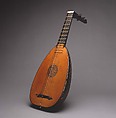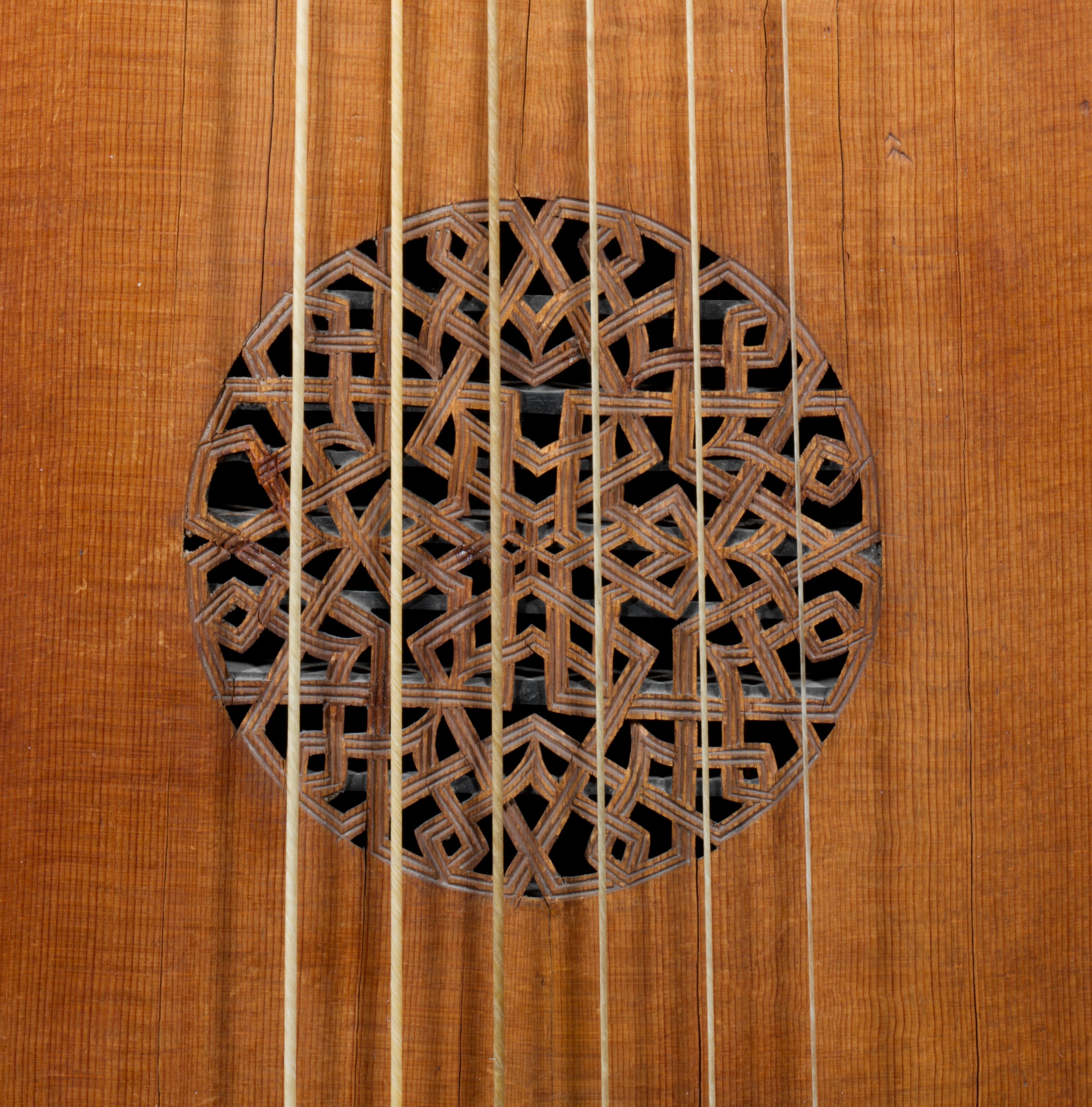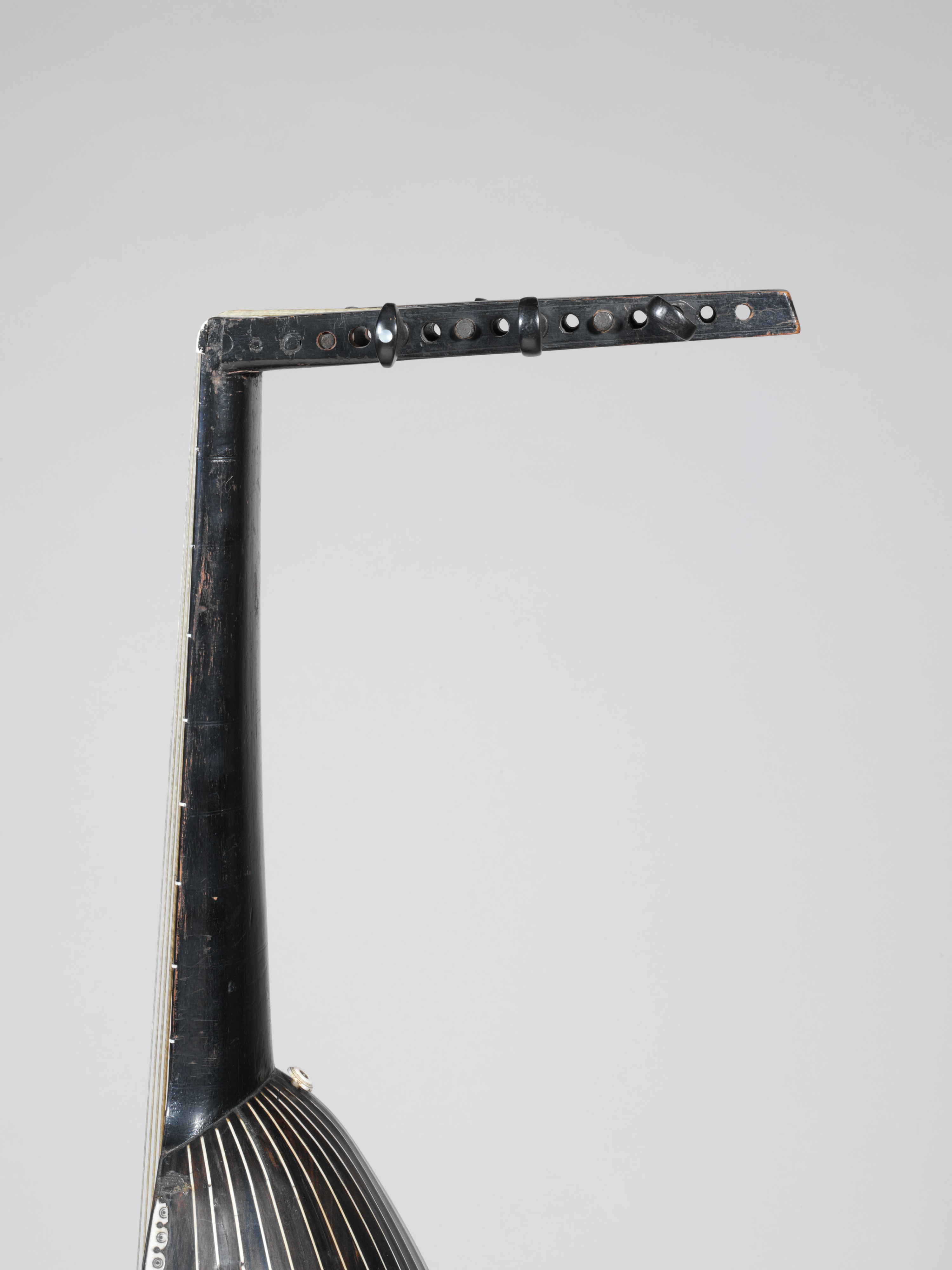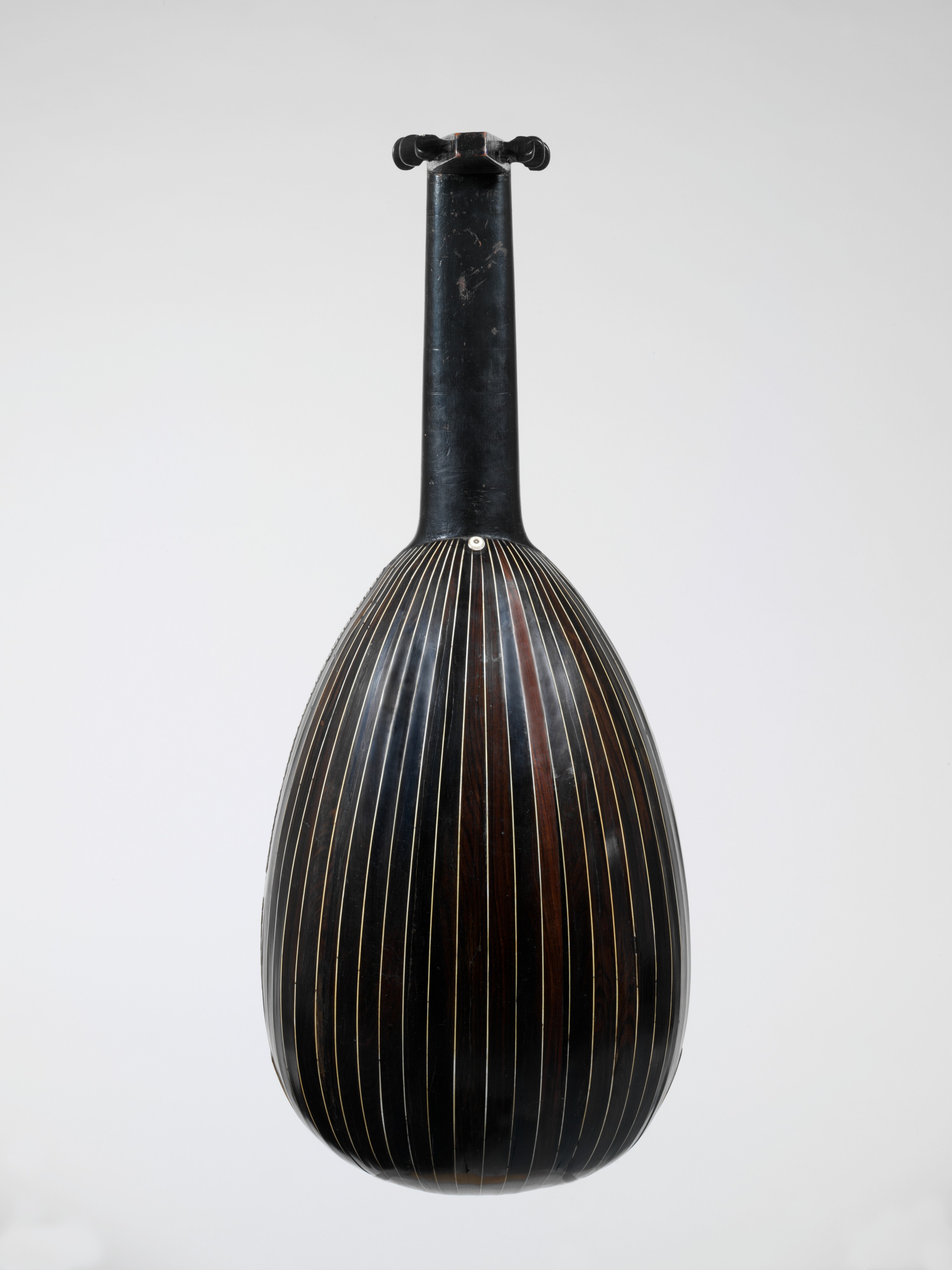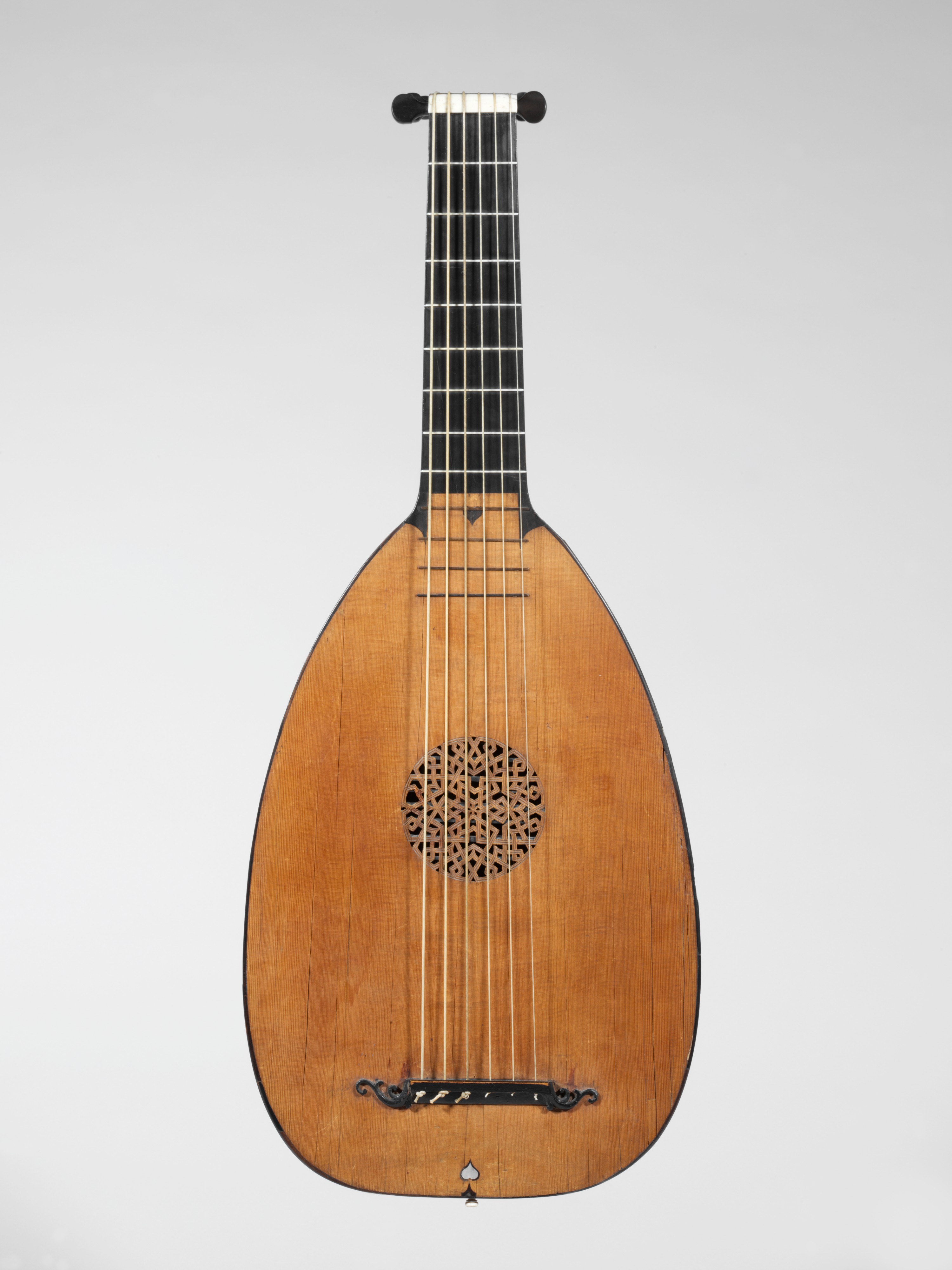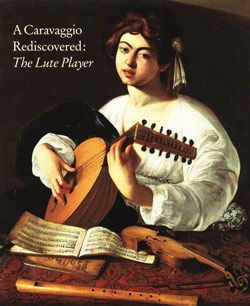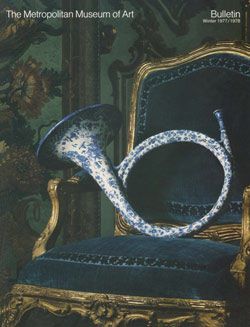Lute
Sixtus Rauchwolff German
The back of this Renaissance lute is constructed of twenty-five ebony or rosewood ribs with ivory spacers, and its top is Alpine spruce. It was probably originally made for seven or eight courses (pairs) of strings, but in the seventeenth century the neck, bridge, and pegbox were replaced or modified to give the instrument a Baroque configuration. In the nineteenth century, the neck was reduced, fixed frets were added, and the instrument was changed to six-strings, like on a guitar.
Sixtus Rauchwolff had an excellent reputation in his day and was a maker of lutes for the prominent Fugger family and the court orchestra in Stuttgart. A label inside the instrument identifies him as the maker and 1596 as the date of the lute. The name of Matthias Hummel, who probably made the Baroque alterations to the instrument, also appears.
(Jonathan Santa Maria Bouquet, 2009)
#Lute, made by Andrew Rutherford, 1989, modeled after the Sixtus Rauchwolff lute at The Metropolitan Museum. "Gagliarda Taburina" from "Il secondo libro de intavolatura di liuto" by Gioavanni Antonio Terzi, played by Christopher Morrongiello, 2015.
This image cannot be enlarged, viewed at full screen, or downloaded.
This artwork is meant to be viewed from right to left. Scroll left to view more.
